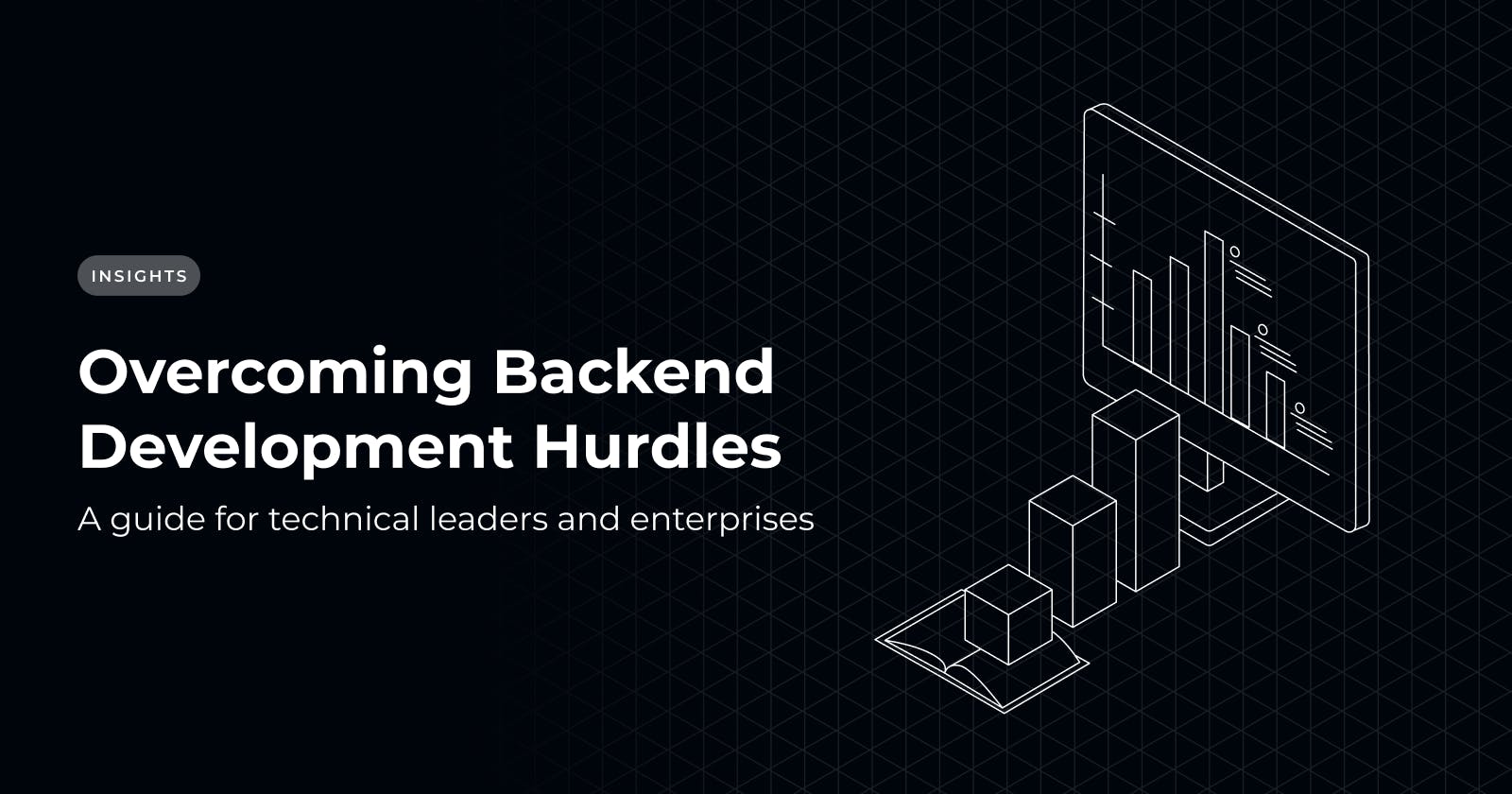Overcoming Backend Development Hurdles Faced by Enterprises and Technical Leaders
The dynamic world of backend development presents enterprises and senior technical leaders with an array of unique challenges. In this fast-paced landscape, scalability is not just a goal; it's a necessity. Failing to scale efficiently can open the door for competitors, pose security threats, and lead to developer burnout.
Let's dive into the critical challenges faced in this domain.
Scalability and Performance Challenges
Scaling backend systems in an enterprise environment is a daunting task that demands meticulous planning. Factors like increasing user loads, surging data volume, and transaction throughput come into play. Previously minor manual tasks can quickly become bottlenecks as an application scales and a team grows. This can be due to an overflow of manual tasks or increasing complexity as processes become more complex.
Efficiency Unleashed: The 80/20 Rule
In the realm of software development, the 80/20 rule, or the Pareto Principle, holds the key to efficiency. Imagine a scenario where crafting the setup and infrastructure of your application, along with tackling repetitive foundational tasks, consumed just 20% of a developer's time. The remaining 80% could be dedicated to innovation, crafting complex features, and delivering an exceptional user experience. This would be a landscape where development teams can truly embrace creativity build memorable applications.
Reality Check: The Current Scenario
Unfortunately, the reality is different. A staggering 80% of effort in a project is funneled into a mere 20% of its features, mainly focused on foundational processes. This leaves developers spending a significant portion of their time on repetitive tasks rather than pushing the boundaries of innovation. This situation stifles developer experience and hinders a project's true potential.
Platformatic reimagines backend development by minimizing repetitive tasks and streamlining setup and infrastructure development. Instead of consuming 80% of time and effort, these foundational tasks are distilled down to a manageable 20%. The secret sauce lies in designing flexible systems that adapt to the unknown, such as unforeseen challenging features that may arise.
Synchronizing Distributed Teams
As teams grow and become more dispersed, effective synchronization becomes paramount. Managing distributed teams, particularly across varying time zones, can be complex, but the solution often lies in clear processes and best practices. By outlining best practices and defining processes clearly and consistently, complex tasks can be broken down into manageable chunks.
Taming Code Complexity
Code not designed for scalability can become a shared nightmare. Large codebases and legacy systems pose challenges in terms of maintenance, understanding system behavior, and introducing new features. To manage complexity effectively, focusing on refactoring, modularization, and documentation is crucial. Refactoring techniques, like breaking monolithic codebases into smaller modules, can enhance code maintainability.
Optimizing CI/CD Pipelines
Optimizing continuous integration (CI) and continuous delivery (CD) pipelines is another critical component when looking to address scalability and performance. CI/CD practices play a vital role in backend development, enabling organizations to deliver software faster, more reliably, and with reduced risks. CI/CD pipelines automate the build, test, and deployment processes, streamlining the software delivery lifecycle. As a team grows, its initial CI pipeline proof of concept may not be capable of scaling in tandem with the team, opening up the risk of communication issues, slow pipelines, configuration complexity, and the emergence of a single point of failure.
Optimizing CI/CD pipelines involves strategies such as automated testing, infrastructure as code, and deployment orchestration. Moreover, adding more build servers or optimizing server usage and pipelines can mitigate these risks. Lastly, ensure that your team of developers can easily access job logs and artifacts, enabling them to make necessary changes according to accepted parameters.
Platformatic enables users to avoid spending time mapping database tables to APIs, allowing users to automatically generate a sophisticated backend that includes database integrations, authentication and authorization, CI/CD, reliable performance monitoring, and an API gateway to provide code as a service for other teams to use. Platformatic takes care of it all, simply integrating with your databases. The out-of-the-box Platformatic experience provides an opinionated view of how distributed backends should work, without being prescriptive.
Addressing Security and Compliance
Backend developers face specific security and compliance challenges, particularly when handling sensitive data and regulatory requirements like GDPR and PCI-DSS. Adhering to secure coding practices, data encryption, and access control is crucial. Frameworks like OWASP, NIST and Twelve-Factor provide guidelines for secure backend development.
Platformatic offers integrated data validation capabilities using JSON Schema, OpenAPI, and GraphQL. It also provides automatic protection against prototype poisoning attacks. With Platformatic, you can fortify your API with multiple authentication methods, ensuring top-notch security.
Choosing the Right Architecture
Modern application architectures have evolved rapidly. Organizations must choose between monolithic, microservices, and nanoservices architectures, each with its own advantages and challenges. Monolithic architectures offer simplicity but can become hard to scale. Microservices offer flexibility but come with complexity as they grow. Nanoservices take granularity to the extreme, providing maximum flexibility but requiring careful management.
Choosing the most appropriate architecture depends on factors such as the complexity of the application, scalability requirements, team structure, and the organization's ability to manage the associated complexities.
Wrapping Up
In conclusion, the landscape of backend development is dynamic and transformative. While technical leaders have to constantly adapt to fast-paced changes and challenges, in this day and age they are also presented with a myriad opportunities for innovation and improvement.
Platformatic is more than just a tool; it's a partner in your journey to backend excellence. To discover how Platformatic can help you build, consume, scale, and operate modern backends, reach out to us at info@platformatic.dev, and download our e-book, "The Technical Leader’s Guide to Scaling Digital Practices."


